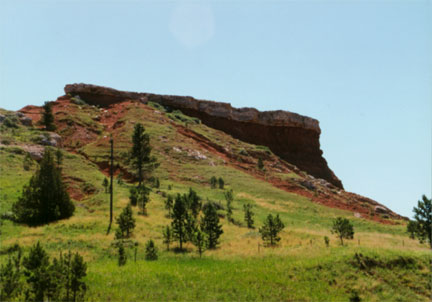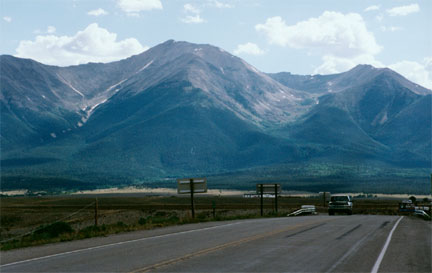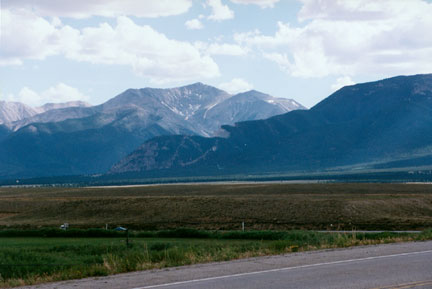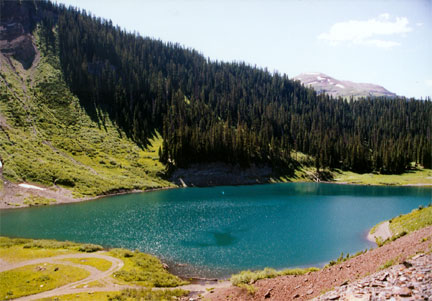 |
The feature at the left is called a butte. Conditions for
butte formation start with a hard rock lying on top of softer rock. The
softer rock erodes quickly but the hard rock that forms the top of the
butte helps to protect the softer rock underneath. When the hard top
rock is eroded away there is no protection for the softer rock below so
the quick erosion of the softer rock leaves a steep sided cliff that is
relatively flat on top. |
| The mountain at the right, Mt. Shavano in Colorado is
an example of a glaciated mountain. Two valleys in this mountain
system show the characteristic U shape of glaciated valleys in
comparison to the much steeper V shape valley of the Black Canyon. This
is because the much more rigid ice erodes off sharp bends as it flows
down the valley. The sharp ridge in the middle of the two valleys is called an arete (internet fonts do not allow the ^ shape over the first e in arete). At the top or head of the valley there is a cirque. Sometimes cirques get filled with water like the one below right. This lake is called a tarn. When 3 sides of a mountain are eroded away by glaciers the remaining point at the top is called a horn. A col is formed when two valleys from opposite sides of the mountain run into each other forming what some call a "pass" over the mountain range. |
 |
 |
 |